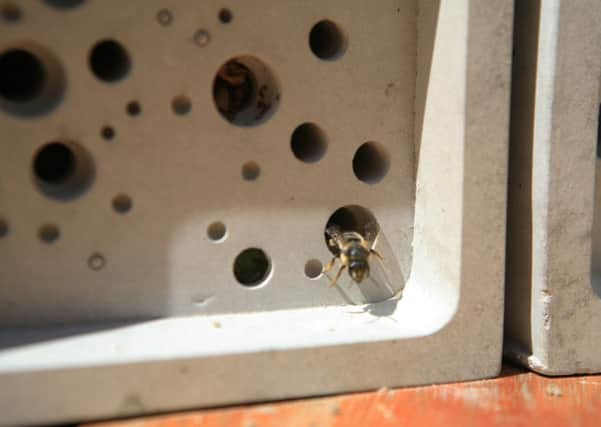A new home, plus one for bees


Lovell has pledged to give away a free bee nesting block to anyone who reserves a new home at one of its developments in Lincolnshire this week.
The Bee Brick, as it is known, provides a nesting site for solitary bees.
Advertisement
Hide AdAdvertisement
Hide AdSolitary bees have no queen or honey to protect, meaning they are non-aggressive and do not sting.
They are currently facing a dramatic decline in numbers due to disease, an increase in chemical use and habitat loss.
Pollinators such as solitary bees account for one third of the food we eat.
Gemma Tovey, sustainability co-ordinator for Lovell, said: “As a responsible developer we are committed to helping to improve the areas in which we build for the benefit of the whole community and this includes the local wildlife too!
Advertisement
Hide AdAdvertisement
Hide Ad“The Bee Brick is a really stylish addition to any garden and we hope that this campaign will help raise awareness of plight of these important pollinators and inspire homeowners to consider making their gardens more wildlife friendly.”
The Bee Brick is solid at the back and has moulded cavities where the bees will lay their eggs, sealing the entrance with mud or chewed up vegetation.
The offer is available at Lovell developments in Lincolnshire, including The Oaks in Greylees. It is designed to coincide with Bumblebee Conservation Trust’s Bees’ Needs Week this week.
The trust has the following top tips for anyone keen to encourage bees to their garden:
Advertisement
Hide AdAdvertisement
Hide Adn Plant more flowers, shrubs and trees, focusing on those that provide nectar and pollen as food for bees and other pollinators throughout the year.
n Leave patches of land to grow wild with plants like stinging nettles and dandelions to provide other food sources (such as leaves for caterpillars) and breeding places for butterflies and moths.
n Cut the grass less often and ideally remove the cuttings to allow plants to flower. This supports the greatest diversity of insect pollinators by providing nectar and pollen resources, places to nest or breed and leaves for caterpillars.
n Avoid disturbing or destroying nesting or hibernating insects in places like grass margins, bare soil, hedgerows, trees, dead wood or walls – it is important to make sure they can nest in safety so that they and the next generation can survive over winter.
Advertisement
Hide AdAdvertisement
Hide Adn Think carefully about using pesticides where pollinators are active or nesting or where plants are in flower – consider control methods appropriate to the situation and only use pesticides if absolutely necessary.